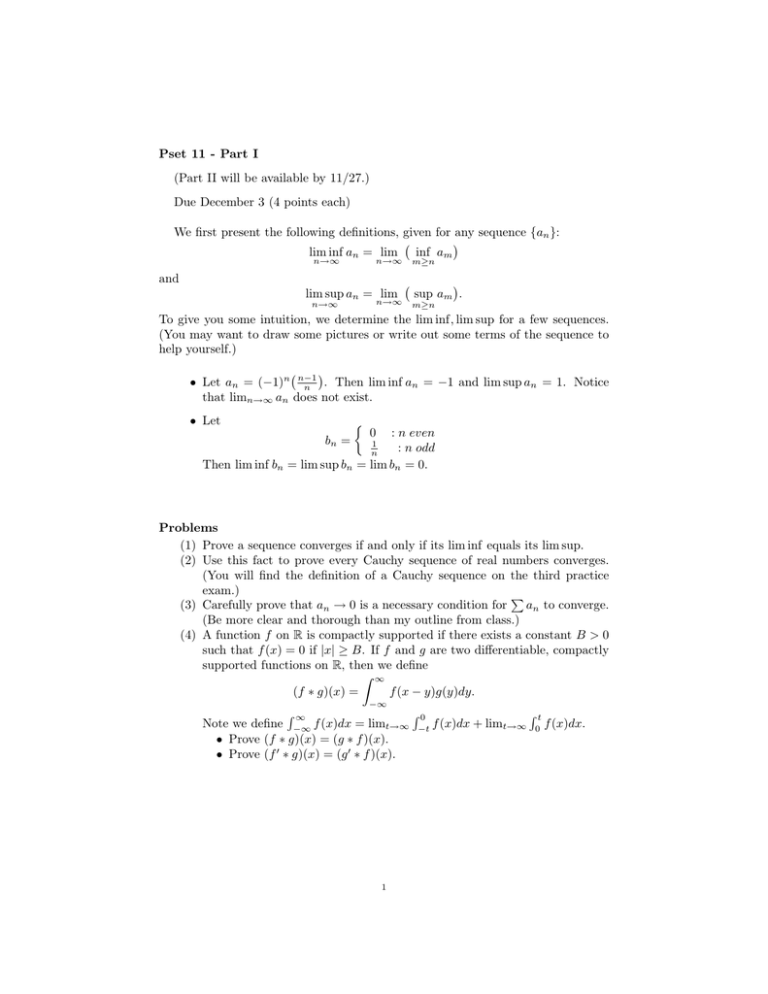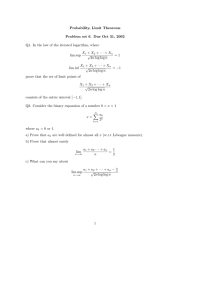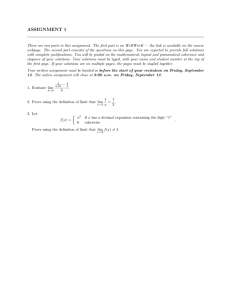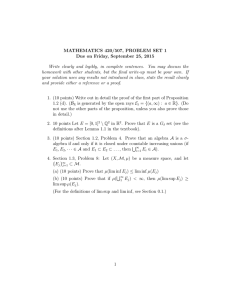Pset 11 - Part I }:
advertisement

Pset 11 - Part I
(Part II will be available by 11/27.)
Due December 3 (4 points each)
We first present the following definitions, given for any sequence {an }:
�
�
lim inf an = lim inf am
n→∞
n→∞
m≥n
and
lim sup an = lim
�
n→∞
n→∞
�
sup am .
m≥n
To give you some intuition, we determine the lim inf, lim sup for a few sequences.
(You may want to draw some pictures or write out some terms of the sequence to
help yourself.)
�
�
• Let an = (−1)n n−1
. Then lim inf an = −1 and lim sup an = 1. Notice
n
that limn→∞ an does not exist.
• Let
�
: n even
: n odd
Then lim inf bn = lim sup bn = lim bn = 0.
bn =
0
1
n
Problems
(1) Prove a sequence converges if and only if its lim inf equals its lim sup.
(2) Use this fact to prove every Cauchy sequence of real numbers converges.
(You will find the definition of a Cauchy sequence on the third practice
exam.)
�
(3) Carefully prove that an → 0 is a necessary condition for
an to converge.
(Be more clear and thorough than my outline from class.)
(4) A function f on R is compactly supported if there exists a constant B > 0
such that f (x) = 0 if |x| ≥ B. If f and g are two differentiable, compactly
supported functions on R, then we define
� ∞
(f ∗ g)(x) =
f (x − y)g(y)dy.
−∞
�∞
Note we define −∞ f (x)dx = limt→∞
• Prove (f ∗ g)(x) = (g ∗ f )(x).
• Prove (f � ∗ g)(x) = (g � ∗ f )(x).
1
�0
−t
f (x)dx + limt→∞
�t
0
f (x)dx.
MIT OpenCourseWare
http://ocw.mit.edu
18.014 Calculus with Theory
Fall 2010
For information about citing these materials or our Terms of Use, visit: http://ocw.mit.edu/terms.





